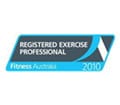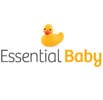Know your enemy
COVID-19 is disease caused by a new coronavirus – SARS-CoV-2 -part of the same family of viruses which cause the common cold. It is likely to have originated in a bat population, spread through another animal and then on to humans in Wuhan. The first case occurred on December 12, 2019. It is similar to the viruses which caused the SARS and MERS outbreaks in 2003 and 2012. It is very different from the influenza viruses which cause “the ‘flu’” every year, “swine ‘flu” in 2009 or “Spanish ‘flu” in 1918.
What should I do if I think I may have COVID-19?
DO NOT see your doctor. Phone ahead to your GP for advice, phone the coronavirus health information hotline on 1800 020 080 for advice, or go online and find the location of a fever clinic. You can now make an appointment to see your doctor ‘online’ (go to https://gpconsults.com.au). This is called “forward triage” and is a critical part of our response. Some of the worst overseas outbreaks of COVID-19 and other coronaviruses were caused by people attending hospitals while unwell.
I have a lung disease – am I in particular danger?
People who have underlying health conditions, including lung disease, are at higher risk of developing severe disease and should take particular precautions. Make your house a COVID-19 safe-zone (see top tips below). Minimise contact with other people – eg work from home if you can, avoid public transport if you can. If you can’t, try and use public transport when it is quietest so you can keep your distance (see Top tips). Stay as healthy as possible – ensure your medications and scripts are up-to-date. Get the ‘flu vaccine as soon as it is available.
I take medication which suppresses my immune system – am I in particular danger?
There is very little information about the risk of COVID-19 in immunosuppressed people. However, it is likely that people who take immunosuppressive medications (eg prednisolone, tacrolimus, cyclosporine, azathioprine, mycophenolate, chemotherapy) will be at higher risk of infection and severe disease if exposed to SARS-CoV-2 and should take particular precautions. That said, there is evidence that prednisolone is beneficial for people who develop severe disease (see treatments), so the news may not be all bad.
I’m pregnant – am I at higher risk?
Unlike during the Swine ‘flu outbreak in 2009, at this stage pregnant women do not seem to be at greater risk of contracting COVID-19, or developing severe disease.
How can I take action?
One of the scariest aspects of an outbreak like this is a fear of the unknown, fuelled by misinformation. You can fight back in ways which will make a difference – and you don’t have to stockpile toilet paper to regain control. Now is the time to stay as healthy as possible. Here are my top tips:
- If you are a smoker, make COVID-19 the reason you gave up. People who smoke are more likely to develop serious disease1.
- SARS-CoV-2 hates sunshine. Get out and enjoy the autumnal weather. Walk your dog. Say hello to your neighbours. Check on vulnerable people in your community (from a distance) as you walk past. Encourage others to start exercising. If you are unlucky enough to contract COVID-19, you will be thankful that you are the fittest you’ve been in years.
- Lose weight. Heavier people were at increased risk of developing severe disease in the Wuhan outbreak. Make a COVID-19 resolution to permanently change your lifestyle. Eat healthy food. Drink water rather than alcohol.
- Spend time with family and friends. Now more than ever is the time to look after your mental health and that of others. You can do this safely by ensuring no-one is ill and making your house a COVID-19 safezone.
- Make your house a COVID-19 safezone. Make handwashing, or using alcohol gel, at the front door compulsory. No exceptions. People who are unwell should delay their visit. Since the virus can remain alive on plastic and other surfaces for many hours or even a few days, consider wiping down articles coming into your house (eg mail, Uber eat containers, supermarket home delivery) before they come inside.
- Get vaccinated. There is no COVID-19 vaccine, and realistically a vaccine is many months or more likely years away (see below). But there is a ‘flu vaccine which will be available soon. Although this provides no protection against COVID-19 it will ensure you don’t get a double whammy.
- Take a holiday in regional Australia. If you are planning a holiday, consider visiting our fire-ravaged regional towns. You can avoid large crowds, take in some clean air, and help those communities get back on their feet. In some of our remote towns and villages, your risk of being exposed to SARS-CoV-2 will be the lowest in the world. But don’t visit if you are ill.
- Try out some new ways to greet one another. The handshake is out at the moment. My personal favourite is Namaste, but the elbow tap, fist pump, heel clip or if you’re really excited to see someone the exploding fistpump are also popular.
- Work from home if you can. If it is possible to reduce congregation at work, do it. Avoid large gatherings of people. Work online or from home if feasible. But don’t forget that complete social isolation, fuelling anxiety, will be more harmful to your health than COVID-19. Careful, considered, safe interaction is perfect.
- Ride a bike or walk to work instead of using public transport. But there is no need to completely abandon public transport. Just take care where you put your hands, use alcohol gel, and wash your hands when you get off. If you are a long way from work, structure your day so you can ride the train or bus part way when the transport is not crowded, then walk the last, more crowded sector.
What can I do to help?
Our response to COVID-19 is as much about our community health as it is our individual health. Adopting the following practices will help you and your community:
- Wash your hands often
- Avoid touching your eyes, nose and mouth with unwashed hands
- Avoid close contact (move 1.5mtrs away) with people who are sick (coughing)
- Facemasks are not required unless you are sick
Why is COVID-19 dangerous?
SARS-CoV-2 is highly transmissible (easy to spread) and has not previously been encountered by humans, so there is no natural immunity. The best data suggest that the chance of dying from COVID-19 if someone is infected is about 1-2%, but is higher in older people, in those with underlying health conditions, smokers and those who are overweight. It is much lower in younger, healthy people. This ‘case fatality rate’ is approx 10-20 times higher than the “standard” ‘flu.
How do I know if I have COVID-19?
The most common symptoms of COVID-19 are fever, sore throat, dry cough and fatigue. Other symptoms can include headaches, nasal congestion or a runny nose. Diarrhoea and nausea have also been reported as symptoms but they are less common.
How can I get it?
SARS-CoV-2 is spread by small drops of moisture we release when we sneeze or cough. SARS-CoV-2 can survive in these droplets (>5micrometers) and aerosols (<5micrometers) for up to 3 hours. It can also survive on surfaces for hours to days. SARS-CoV-2 likely spreads from person-to-person through:
- Direct close contact with an infected person while they are contagious
- Close contact with an infected person who coughs or sneezes
- Touching objects or surfaces that have been contaminated by someone with the SARS-CoV-2 infection, then touching your mouth or face.
- The best evidence suggests that the virus can remain viable (alive and potentially infectious) for up to 4 hours on copper, up to 24 hours on cardboard and up to 2-3 days on plastic and stainless steel2.
Importantly, we now know how the virus gets into cells in our body to start an infection. It needs a cell surface receptor called ACE2 to enter a cell. Cells which don’t express ACE2 on their surface can’t become infected. The cells which line our nose and upper airway have this receptor, as do cells which line our gut. This information is important as it suggests that ‘fomite’ transmission may be particularly important. This occurs when an infected surface is touched, the hand touches the mouth and viral particles are swallowed. This is also why hand-washing is all important.
How likely am I to get it?
Overall, the risk is very low, but there are several scenarios. The most likely scenario is that the public health measures (eg banning congregation of large numbers of people) taken by the Australian government will effectively slow virus transmission so that the number of new cases starts to drop rapidly after we reach our peak. This has happened in several countries, including China and Singapore. Australia’s first infections lagged by about a month behind these countries, so it is possible that Australia’s number of new infections starts to drop in April. If that happens, it may be that only hundreds to several thousand Australians are infected, meaning that the chances of the average Australian contracting COVID-19 is very remote.
The alternatives are that we see a much more prolonged ‘peak’, recurrent ‘waves’ of new infections (perhaps if the stringency of public measures are relaxed too early) or very large explosive outbreaks localised to geographic areas, as has happened in Italy. In these cases a large minority of the population may become infected before enough people are immune to make it difficult for the virus to find new hosts to help it spread. It is these more serious scenarios for which our health systems are currently preparing.
If I do get COVID-19, how long will I be ill for?
Most people recover within 1 week. Quarantine periods last 2 weeks, with viral testing before quarantine is lifted.
What do I do if my children get it?
Children have almost universally experienced a mild illness when infected with SARS-CoV-2, so you shouldn’t worry too much. You will be treated as a close contact and may be placed into quarantine even if you are well (rules are changing rapidly). Until early March quarantine was conducted in hospital, but this is now changing as the number of cases rises. You may be placed in strict home quarantine.
Can I visit my parents?
Older people are at higher risk of developing a severe illness, so we must work hard to protect these members of our community in particular. However this does not mean you can’t visit your parents, and take their grandchildren with you. But before you visit, ensure everyone is completely well. Do not visit if ill. Wash hands before leaving and before entering their home. Make sure both homes are COVID-19 safezones.
Will washing my hands really help?
Absolutely, SARS-CoV-2 hates hand washing. Soap and water is best, but alcohol gel is also good.
If I have underlying health problems, do I have to stay inside all the time?
No, but avoid large gatherings of people. Get someone else to do your shopping, or order online. But get out in the sunshine and exercise to maintain your fitness. Remember SARS-CoV-2 hates sunshine.
How long do you think this will last?
It is likely that we won’t see the end of the pandemic for many months, possibly longer. It is likely that COVID-19 will leave permanent changes to the way we interact with one another. It may not all be bad however, maybe we will appreciate quarantined family time more.
Maybe our overall health will be better. Maybe fewer of us will smoke. Maybe our health systems will become more streamlined and consumer-responsive.
Should I wear a mask?
You don’t need to wear a mask if you are healthy. While the use of surgical masks can help to prevent transmission of disease from infected patients to others, masks are not currently recommended for use by healthy members of the public for the prevention of diseases like COVID-19.
Should I be stockpiling food?
No. There is always online shopping or a friend / relative who can help out if you are placed in two weeks quarantine (groceries placed at front door, not inside). You shouldn’t need more than a few days food supply.
How can I improve my chances of staying well if I get it?
See Top tips above.
Does the ‘flu vaccine protect me against COVID-19?
No. But it is still very important to avoid co-infection.
I have an overseas trip booked – should I go?
Since COVID-19 is a world-wide problem with a similar risk of being exposed in most (but not all) countries, the risk once you arrive in your destination is probably similar to that at home, however that is by no means the only consideration. Current advice from our government is to reconsider all overseas travel (https://www.smartraveller.gov.au/), because international travel is associated with unavoidable congregation of large numbers of people, insurance may not be valid, if you become ill you will have to deal with a foreign healthcare system, and you may have to face quarantine on return, even if you remain well. Most of my patients are cancelling their overseas travel plans. Of course since this advice was drafted, the Australian government now (as of 15th March) mandates 2 weeks quarantine for overseas arrivals.
Can I get tested?
Testing methods may include a blood test, a swab test inside your nose or in the back of your throat, or a sputum test, which examines a mix of saliva and mucus. There are restrictions on who should be tested. The current testing criteria in Queensland are:
- Any person who has travelled overseas within the 14 days before the onset of fever or acute respiratory infection (e.g. shortness of breath, cough or sore throat);
- Any person with close contact in 14 days before illness onset with a confirmed case of COVID-19 and who is now exhibiting fever or acute respiratory infection (e.g. shortness of breath, cough or sore throat); or
- Any person with severe pneumonia with no other cause identified, with or without recent international travel.
Do my blood pressure tablets increase the risk of me getting infected?
Many patients take ‘ACE inhibitors’ (ramipiril, perindopril, and any other drug ending in ‘..pril’) or Angiotensin II receptor blockers (ARBs, eg telmisartan, candesartan, and any other drug ending in ‘..sartan’). Because these drugs may interact with the ACE2 receptor (see 5 – ‘How can I get it?’) it was thought they may modify viral infectivity. This could in theory be good or bad. In practice however it does not seem as though taking these medicines affects the risk of developing severe infection. These medications are extremely important heart and blood pressure treatments. Continue to take these medicines as prescribed by your doctor.
Can dogs get COVID-19?
The World Health Organisation says there is currently no evidence that pets such as dogs or cats can be infected with SARS-CoV-2. So go and walk your dog.
Is there any treatment?
There is currently no proven treatment, but a huge amount of work is underway world-wide. Many drugs are showing potential efficacy in laboratory studies. Some of the most promising include remdesivir, cepharanthine and chloroquine to reduce the seriousness of infection, and methylprednisolone and tocilizumab for those who have developed severe pneumonia.
How far away is a vaccine?
Whilst it is already possible to copy a part of the SARS-CoV-2 virus and produce what could be termed a vaccine which would be recognised by our immune system but not cause infection, these products are yet to be tested for their effectiveness and safety. Such testing usually takes years. Acceleration of this testing process needs to be balanced against the risk of harm. It is likely that the companies and institutions making vaccines will not elect to dramatically accelerate the testing process for fear of being labelled reckless or for allegedly or actually causing harm, with the subsequent legal and financial ramifications of such allegations.
About the author
Professor Dan Chambers is a Thoracic and Transplant Physician and Clinical Professor, The University of Queensland. He cared for many critically ill patients during Swine Flu epidemic in 2009. His research focuses on severe lung disease and transplantation.
References
- Liu W et al Chin Med J, 2020
- van Doremalen et al, MedRxiv, 2020.
Cameron Corish has been caring and achieving results for the local Wishart, Mansfield and Mt Gravatt community for over 10 years. Together with the Core Health Coaching Team, he takes a multi-disciplined and holistic approach to health and fitness addressing the physical, mental and emotional aspects of one’s health.
Ready to feel and look your best? Come in for a FREE chat and see how we can make a difference in your life. Call 0406 451 907 or email Cameron at cameron@corehealthcoaching.com.au















[…] Prevention Fact Sheet. We have managed to source this inside information from Brisbane’s top Respiratory Physician and Clinical Professor. […]